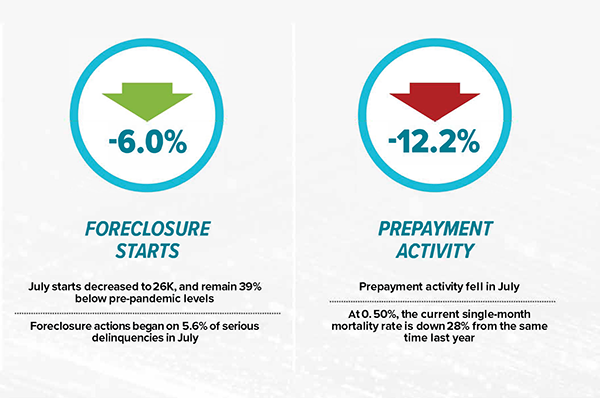
Black Knight: Nearly a Quarter of Homebuyers Face $3,000 Payments or More

(Courtesy Black Knight)
Monthly mortgage payments between $2,000 and $3,000 have rapidly become the norm in today’s housing market in the face of spiking interest rates and historically high home prices, reported Black Knight, Jacksonville, Fla.
Black Knight Vice President of Enterprise Research Andy Walden called this trend a remarkably recent development. “The average principal and interest payment among borrowers purchasing a home using a 30-year fixed-rate loan hit its highest point ever in July at $2,306, and that’s before taxes and insurance are factored in,” he said. “That’s up 60% over the past two years, which got us to thinking: just when did the $2,000 monthly mortgage payment become the norm? Just two years ago, only 18% of homebuyers were facing that level of payment; as of the end of July that share had grown to 51%. Beyond that, nearly one in four July homebuyers has payments north of $3,000, up from just 5% in 2021.”
Walden noted housing affordability has been an issue for some time, “but this puts the situation in stark relief,” he said.
Rising mortgage rates are not just hampering prospective homebuyers, though. “While tappable equity levels have returned to near-record highs, rising rates are having a clear impact on how–and how much–equity mortgage holders are willing to withdraw from their homes. All in, including first-lien cash-out refis and second-lien home equity loans and lines, we saw mortgage holders withdraw $39 billion in equity from their homes in the second quarter,” Walden said. “That’s up slightly from $37 billion in the first quarter, but only about half the volume of Q1 2022, before interest rates began to climb.”
Historically, from 2010 to 2021, mortgage holders pulled out just under 1% of available equity each quarter. But that share has fallen to 0.4% over the last three quarters, suggesting that rising rates have resulted in a roughly 55% decline in equity withdrawals, the report said. “In essence, over the last 15 months, there’s been nearly $200 billion less equity withdrawn–and reinjected into the broader economy–than might otherwise have been, due in large part to elevated interest rates,” Black Knight said.
Data on home equity lines of credit suggests further headwinds. Pegged to the prime rate, which rose later in the cycle than first-lien rates, HELOCs benefitted from the Q2/Q3 2022 30-year rate movements, with borrowers at times able to get lower rates on HELOCs than a cash-out refinance–a historically rare occurrence. But since then, HELOC rates have risen along with aggressive Fed rate hikes, with the average HELOC offering now above 8.5% for the first time in the 15-plus years Black Knight has tracked the data. “Such HELOC rate increases have left borrowers without an overly attractive option to tap into their equity and have led to weaker withdrawal volumes this spring and summer, with second-lien withdrawals down by a little over 30% from the same time last year,” the report said. “However, HELOCs still remain the more attractive of the two options for homeowners needing to access equity without sacrificing record-low first-lien rates.”
